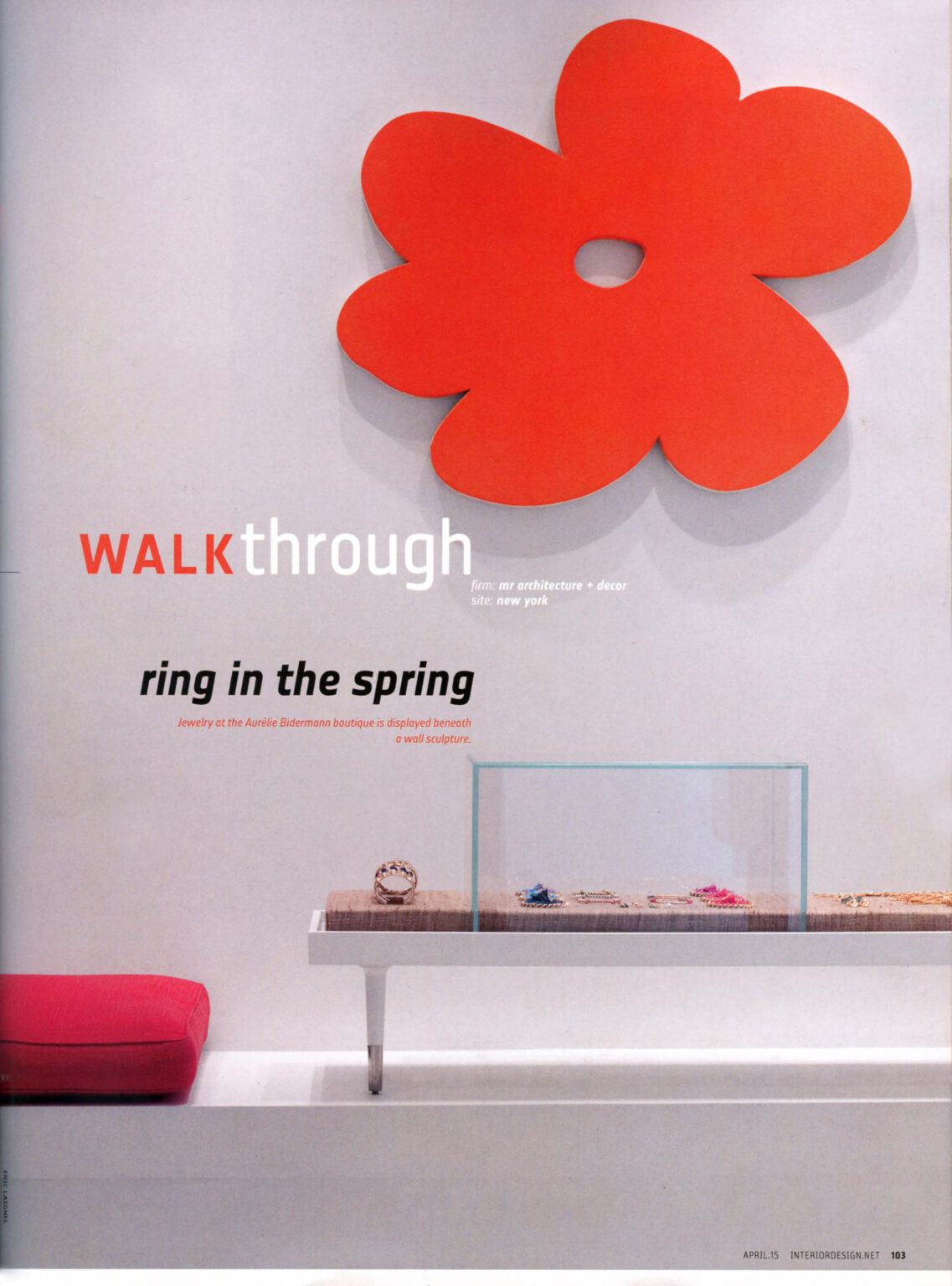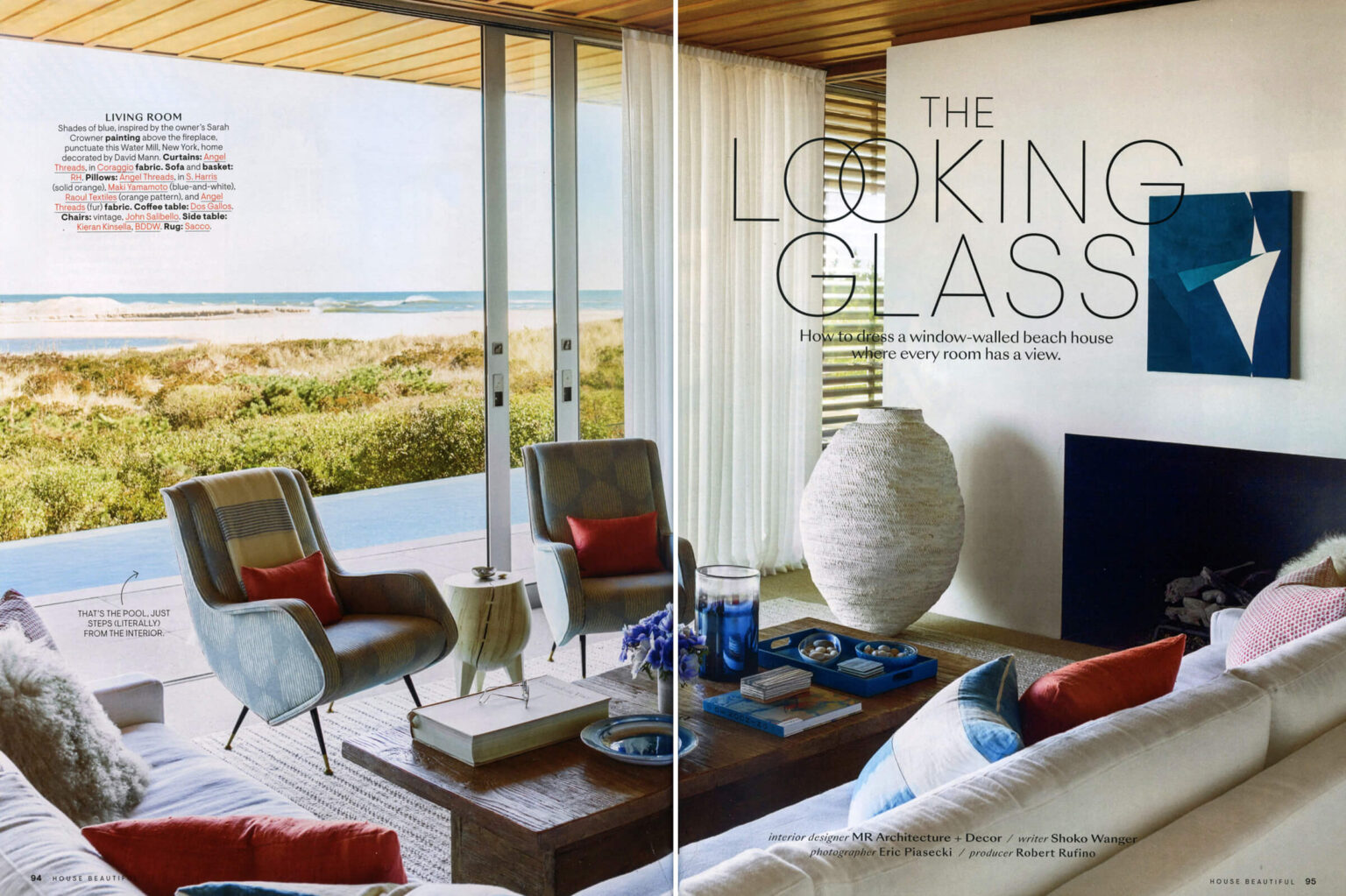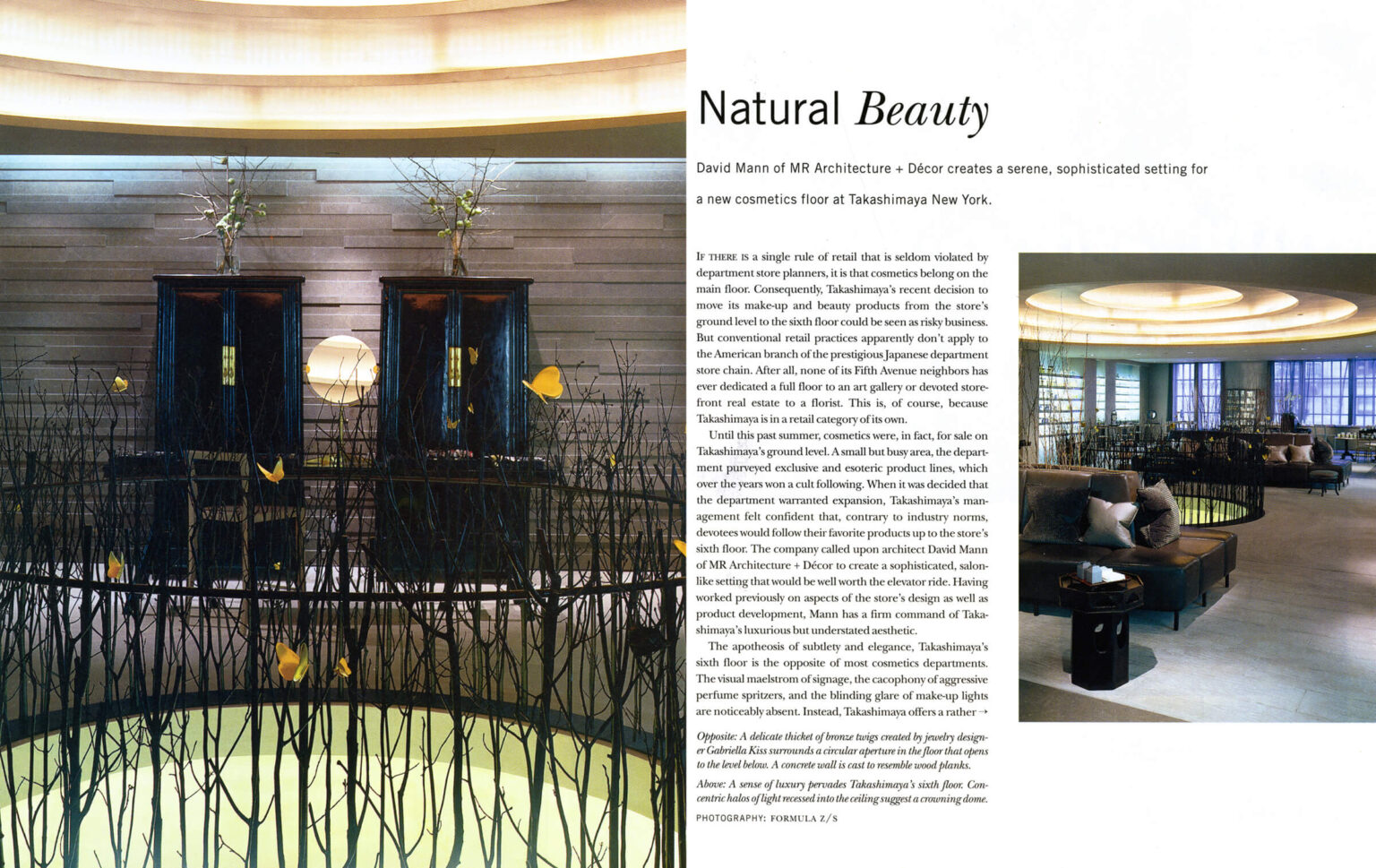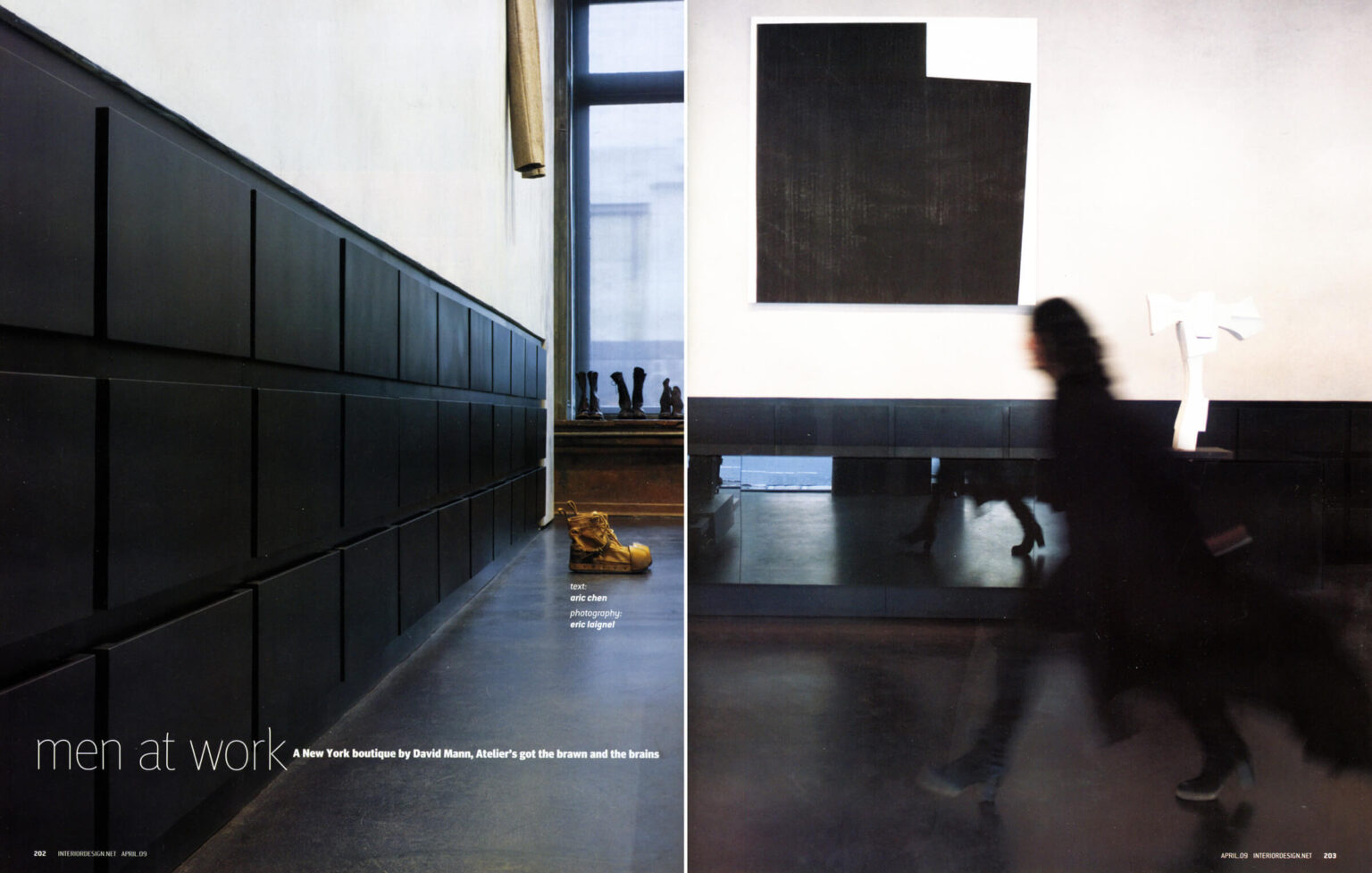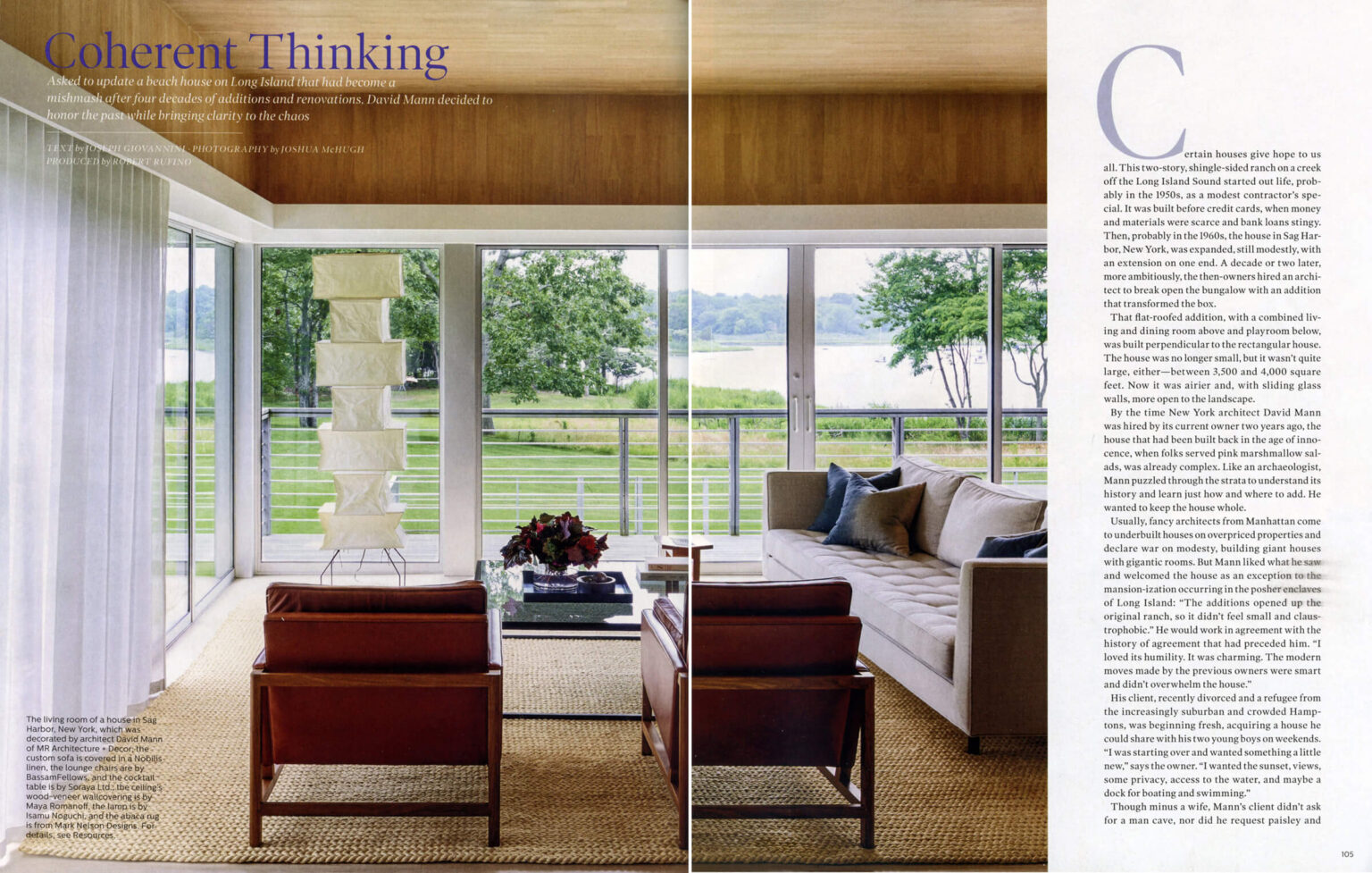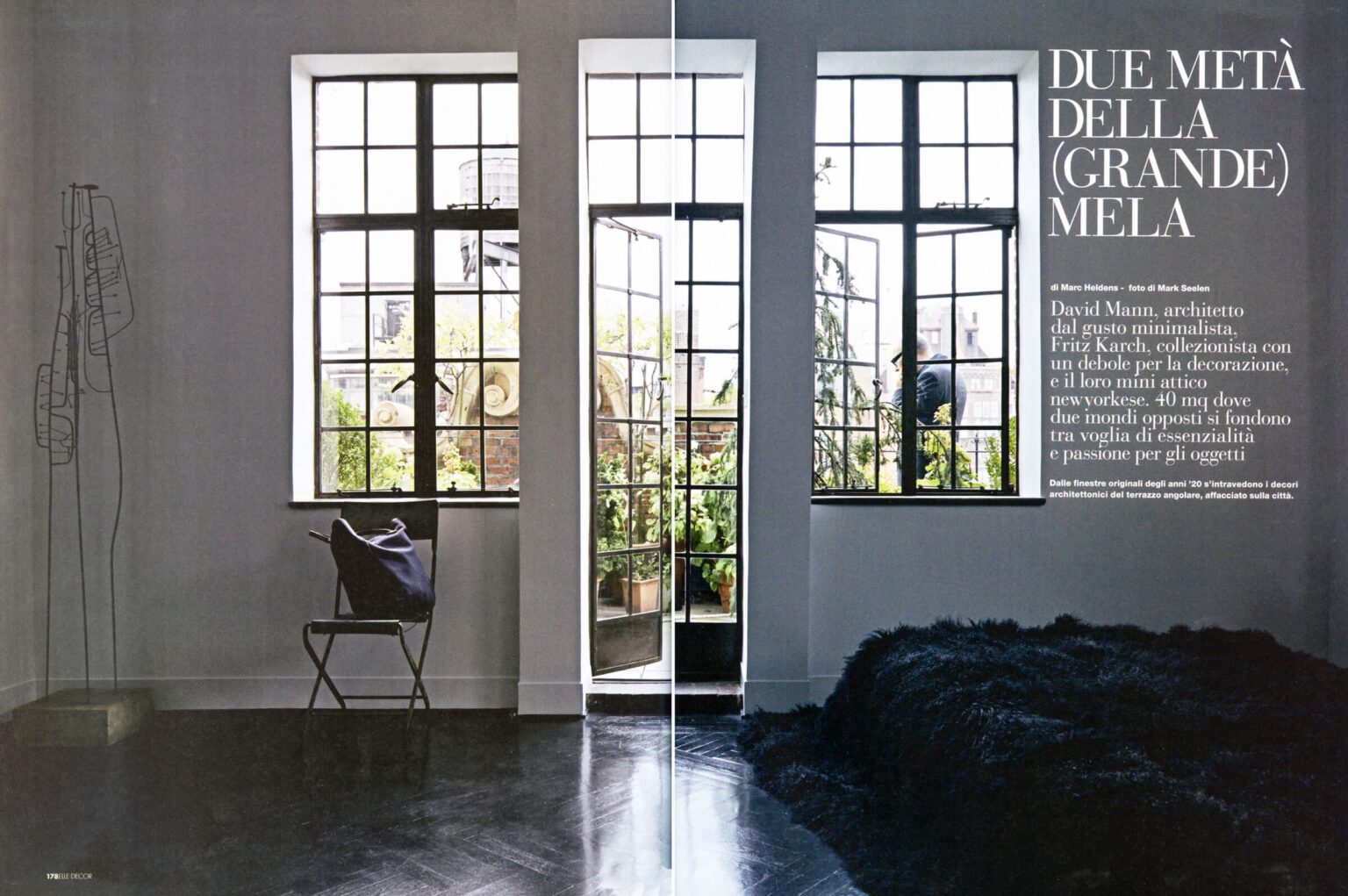
Just inside the entrance to our office, there is a blackened steel bookshelf that measures 10 feet wide by a little over eight feet tall. In it is a collection of magazines—81 stacks in total—that dates back to the late nineties. Within the stacks are issues of Wallpaper and Frame, Architectural Record and The World of Interiors, US and international editions of Architectural Digest, many of Dwell’s earliest issues from when it first arrived on the scene in 2000 and dozens of copies of Martha Stewart Living, Metropolitan Home, and House & Garden from when they were in operation. In this digital age we are living in, the shelf is almost a reliquary, the magazines artifacts from another time.
In a separate area a few feet away from the shelf at the entry, there is another one, slightly smaller, with a library of books on architecture, art and design and more magazines. The collection here, however, is of the various publications that, over the years, have featured projects by MR. While this collection is a fraction of the one housed in the reliquary, it’s impressive, including the same favorites as World of Interiors and AD, and others from House Beautiful to Elle Decor and Interior Design. Even though so much of life these days is presented to us digitally, or maybe because it is, there is still something very special about seeing your company’s work in print; seeing a project you know so intimately splashed across the pages of a glossy magazine.
I have always loved leafing through shelter magazines while in a waiting room at an appointment, or when in the suburbs, in line at the grocery store. And back in the day when there were magazine shops scattered around the city, I could spend hours at one, getting lost in copies of Elle Decor Italia or Casa Vogue or any of the other dozens of obscure titles, daydreaming that the houses featured inside them were mine. Page after page of beautiful homes that people actually live in. Homes that someone, somewhere designed and someone, somewhere decorated. But before I joined MR, I didn’t think about those people behind the projects, and I certainly didn’t think much about what went into getting a project into a magazine. Now that my role here includes managing some of the tasks that come with getting a project in print, I have a greater appreciation for it.
At the beginning of the publishing effort, there are a few necessary to dos and a few key points to consider. First always, is where MR wants to see the project published. This has to do most with the feel of a project and which magazine it best aligns with. Is it a pre-war apartment in the city that’s furnished with important antiques or a ground-up house in the country that’s modern and minimalist in tone?
Next is photography, which includes both scouting shots and a professional shoot. Whenever a project has been finished—once construction is complete, and furniture and furnishings have been moved in—we need to document it with scouting shots. These are quick photos we take ourselves that capture all of the key elements of a project: the main rooms, the exterior (if it’s a house), and any notable spaces or details that might make it stand out, for example, a dry-stack stone fireplace, a double-height entry with vintage chandelier, or a leather-walled dining room. We use these scouting shots, along with a project brief to pitch editors. Typically, while we wait to hear from them, we move ahead with professional photography ourselves, in order to get imagery for our website and marketing.
So then we ask: Who should shoot the project? In the nearly thirty years since the firm’s founding, MR has formed some great relationships with some of the most outstanding residential photographers, and I think most often, David has in mind who might be best for a project long before it’s even complete. Once we’ve decided on a photographer, it’s reaching out to him or her about scheduling, and then coordinating with the MR team and the client to get a firm date on the books. If it turns out that an editor decides he or she wants to run the project, the magazine will hire the photographer and coordinate the shoot. This might mean we end up working with a particular photographer for the first time. Ideally, they are a good match and someone we will keep in mind for the future.
In preparation for the shoot, we assess whether or not the project needs to be styled and if so, to what extent. A house that is newly built may not look very homey yet, but with a carefully selected mix of furniture and furnishings—think books, baskets, throw blankets, flowers, maybe a chair here or there, or even a borrowed piece of artwork—we can style it to make it look like a comfortable, well lived-in space. Based on our assessment, a team from our decor department will shop and gather items for this phase.
Once the styling is complete, we’re ready for the shoot. Depending on the size and scope of a project, this could take one or two days. If, for example, there is an outdoor component like a pool and pool house, or a guest house or even a notable garden, patio, or terrace, it is likely that two days would be required in order for the photographer to capture all of the desired shots without having to rush, and in some cases, before losing daylight. Following the shoot, the photographer processes the images and takes care of any necessary retouching.
It’s an exciting day when we get the images back. Even if we’ve been on site since the start of construction and know every detail of a project, there is something about seeing it decked out and photographed in good lighting; like seeing someone whose everyday wardrobe consists of jeans and t-shirts get dressed up for a gala. While most often, every shot is well-composed and worthy of landing in a magazine, it’s typical that we narrow down the selection to 10-12 of our favorites. If we are still pitching to editors, this selection will take the place of the scouting shots. And in a case where the magazine coordinated the shoot, the images are delivered to the editor, and they make the selection to use in the story.
Something we need to always keep in mind with a publishing effort is the timeline and specifically, the waiting that is an inevitable part of the process. There is the waiting that I’ve mentioned—for a project to wrap up, for the photography, to hear back from editors. But what might be the biggest practice in patience is waiting to actually see the finished story in print, in our hands. It isn’t unusual for the timing of a project’s completion and its photography to not line up exactly with a magazine’s calendar. We might have a beach house ready for publishing and perfect for a summer story but find that editors are planning their fall and winter issues. This might mean a yes, but that we will wait anywhere from six months to a year before the story goes to press. It’s in this time that, as we complete other projects, we begin the entire process again for them.
When a project is finally scheduled to run somewhere, a writer is assigned to the piece, and an interview is set up between them and MR. In the weeks that follow, fact-checking takes place and final details are wrapped up. And again… we wait. It’s often a surprise, when the package will arrive, but with print stories, somewhere between a week and a few days before the issue hits newsstands, the editor sends a copy or two to our office to give us a sneak preview. We turn the pages in search of the first familiar image, eagerly awaiting the full spread.
Since its start, MR has been published in print more times than I can count, and on a few wonderful occasions, we’ve had the rare privilege of landing a cover. In the coming months, we have several projects slated to run in various publications. Digital opportunities roll in regularly, and while most of these are small pieces, our tally of project exclusives is growing. Whenever we see our name out into the world, arriving in someone’s inbox by way of email newsletter, appearing on an Instagram feed for a magazine’s online edition, or showing up in a headline within a Google search, it’s validation of the work we do, and we are grateful. But as long as print journalism still exists, even in this ever-evolving digital world, in my opinion, nothing will ever compare to the thrill that comes with seeing one of your company’s projects on the glossy pages of your favorite magazine.
